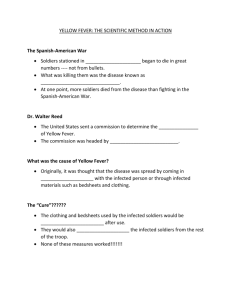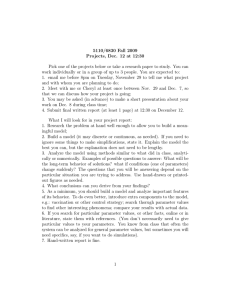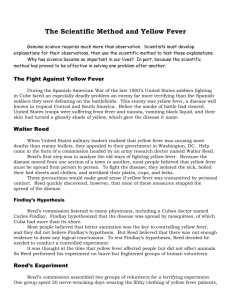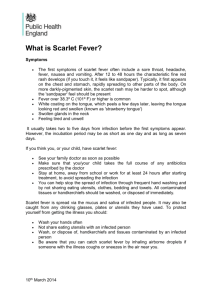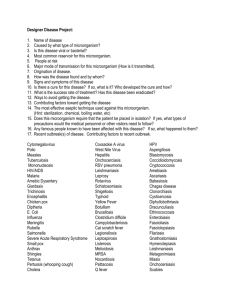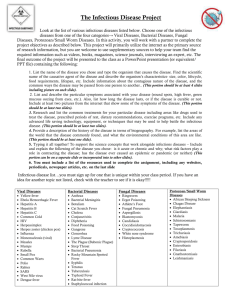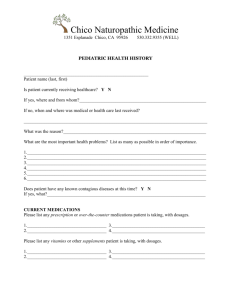Scientific Method
advertisement
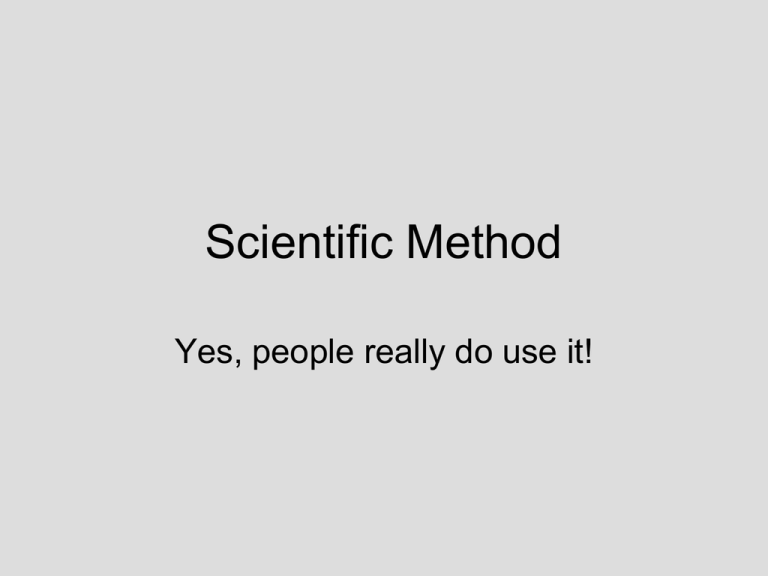
Scientific Method Yes, people really do use it! Spanish-American War, late 1800’s • US soldiers were stationed in Cuba • More soldiers died of Yellow Fever (YF) than bullets • Symptoms of yellow fever: – Fever – Nausea – Muscle pain – Vomiting blackened blood – “the black vomit” – Ghastly yellow skin - jaundice Death Wagon The Reed Commission US Army Yellow Fever Commission Post Spanish-American War research in Cuba Walter Reed • Knew: old way to fight disease – Isolate sick – Boils clothes, sheets – Sterilize plates, cups.. • Realized: The disease was still spreading Army Research Doctor Findlay’s hypothesis • Carlos Juan Findlay, Cuban doctor • Thought disease was spread by mosquitoes – Had been saying it for 20 years – Called “The Mosquito Man” • Most people did not believe this Reed’s Experiment • Group 1 • 20 days • used filthy clothes, sheets, utensils of infected YF soldiers • Protected from mosquitoes with screens Aedes Theory – mosquito genus • Group 2 • 20 days • Used fresh clothes, clean sheets, utensils • Isolated from infected YF soldiers • Not protected from mosquitoes • 3 doctors joined this group Formites Theory – touching infected stuff Results • Group 1 – no one developed yellow fever • Group 2 – many including all 3 doctors (1 died) became sick • US pulled out of Cuba (republic of Cuba) left a naval base - Guantánamo Bay (1901) • Once the disease was under control in Panama, the US began considering building the Panama Canal. Yellow Fever Quarantine Bottom Line • Science requires much more than observation. Scientists must develop explanations for their observations and then use the scientific method to TEST those observations. • What steps to the Scientific Method can you identify in the Yellow Fever problem? Scientific Method? Time to create our notes. • Problem identified • Developed a hypothesis • Identify independent (manipulated) & dependent (responding) variables • Establish a control group • Experiment & test your hypothesis • Record & organize your data/what you see-pictures, graphs, measurements • Statement about what happened---conclusion • Inform/communicate your findings Independent (manipulated) & Dependent (responding) Variables • • • • • • Manipulated variable is what you change Responding variable is what you measure Listen to the tomato plant example Identify each variable and constant Make a space on your paper for each You and your lab partners must determine which parts are variables and constants The tomato plants • 12 tomato plants were grown in 48” pots • Each plant received the same light & water for 8 weeks during the summer • 3 plants received nitrogen fertilizer • 3 plants received compost tea • 3 plants received P-N-K fertilizer • 3 plants were not fertilized • Weekly heights were measured • Number of fruits were collected
